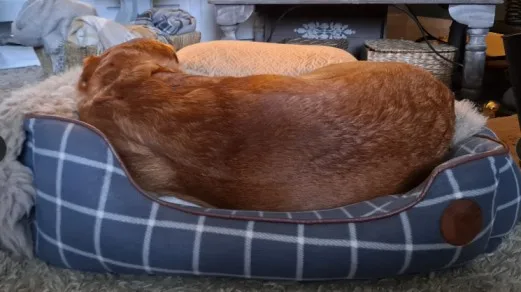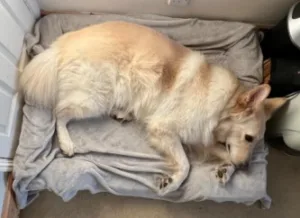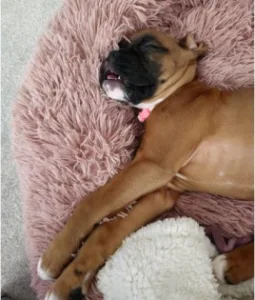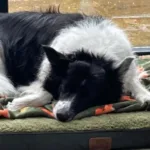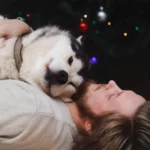Humans are not the only ones who have favorite positions to sleep in and tell a lot from them. Dog sleep is a fun, fascinating thing packed with peculiarities and secret messages. Their position, rhythm, and need for sleep help us better understand our furry friends and help them sleep properly.
- Positions: Have you ever noticed puppies sleeping like a starfish? Or does your dog curl up in a ball while asleep? Different positions can demonstrate room temperature regulation, a sense of security, or even character.
- Pattern: How many hours does your dog really need to rest per day? We are going to consider the dog’s sleep cycles, compare them to human ones, and understand different factors, including age, breed, and activity level, that affect a dog’s sleep.
- Needs: Dogs also have their own sleep needs. Find out how to make them feel comfortable while resting, provide them with good rest, and prevent sleep disturbances, as in people.
Apart from that, if you are a responsible pet owner, the first thing you should know is your dog’s sleep.
- Health: Dogs also need good sleep, just as humans do, because it is necessary for their good physical and mental functioning. Sleep promotes muscle repair, memory consolidation, and hormone regulation. In other cases, lack of sleep may lead to constant fatigue, frequent diseases, and a lowered pet’s defense.
- Behavior: Sometimes if the dog changes the hours of sleep, it may be the first indicator of health problems. Thus, if the dog has recently begun to sleep longer or, conversely, dog does not sleep during the day or cannot sleep at night, it may be better to check on it with the vet.
- Bonding: By observing your dog’s sleep patterns and likes and dislikes, you can make their sleep environment better. Thus, their overall health benefits, and it helps in developing a bond with your furry companion.
Deciphering Dog Sleeping Positions
1.The Side Sleeper
Like humans, canines love to sleep by their sides. This is one of the most widely recognized positions for canines of any age and breed. This shows that your canine feels relaxed and gets into its environment.
2. The Lion’s Pose or Sphinx Pose
Here, your canine lays down with his head laying on his paws, ready and prepared to work.This pose shows that your dog is light asleep and alert, even while resting.
3. The Superman Sleeping Position
In this lively position, your canine lies level on his stomach, with his legs spread out behind him. This position is most common in youthful, energized canines, and they might be prepared to bounce and play immediately.
4. The Donut
Curled into a tight ball, this position feels super comfortable and warm. Dogs that sleep in this position are seeking comfort and protection, especially in cold weather.
5. The Cuddle Bug
If your dog likes to hang out with you or another pet, they are a cuddle bug sleeper. This position shows affection and a strong sense of trust and security.
6. Head and Neck Raised
In this position, your dog laid down on its side with its head and neck supported. This pose allows them to keep an eye on their surroundings while they sleep, suggesting light sleep or alertness to potential threats.
| Dog Sleep Position | Description |
|---|---|
| Side Sleeper | Relaxed and Comfortable |
| Lion’s Pose | Alert and Ready |
| Superman Pose | Energetic and Playful |
| The Donut | Seeking Warmth and Security |
| Cuddle Bug | Affectionate and Trusting |
| Head and Neck Raised | Light Sleep or Alert |
| On the Tummy | Cooling Down |
| Back to Back | Companionate and Trustworthy |
| The Burrower | Cozy and Secure |
| Sprawled Out | Cooling Off on Hot Days |
7. On the Tummy
Sleeping with its legs on its stomach can indicate that your dog is trying to cool down, especially on a hot day. This position can also be comfortable for dogs with stiff joints.
8. Back to Back
A back-to-back hug with another dog or human is a sign of companionship and trust.
9. The Burrower
If your dog likes to burrow under blankets, pillows, or even your clothes, they are burrows. This position indicates a desire for comfort, security, and warmth.
10. Sprawled Out on the Tile
On a particularly hot day, your dog may spread out on cool surfaces, such as tile floors, to cool his body temperature.
Dog Sleeping Patterns and Behaviors
Canine sleep patterns can tell you a lot about your dog’s health and well-being.
- Circling, Digging: These ways of behaving are connected to the home instead of sleep itself. Circling frequently goes before sleeping and can be a method for making a comfortable space for your canine. Digging can also be a settling behavior, or it very well may be a sign of fatigue or nervousness.
- Yawning: Yawning is a typical indication of weariness in canines, very much like humans. Be that as it may, it can also be an indication of stress or fulfillment. If your canine yawns unnecessarily, particularly around new individuals or in animating conditions, he might be feeling restless.
- Dreaming: Wriggling, moving legs, and crying during sleep are signs that your canine is dreaming. This is a typical piece of the sleep cycle and demonstrates that they are getting great quality rest.
- Snoring: While some breeds, like pugs or bulldogs, are prone to snoring due to their facial structure, snoring can also be a sign of weight problems or allergies that are constricting your dog’s airways. If your dog snores excessively or has trouble breathing, consult your veterinarian.
Promoting Quality Sleep for Your Pup
The above tips will help keep a pet environment that meets all needs while providing comfy and safe sleep.
Creating a Comfortable Sleep Environment
- Quiet and peaceful: a sleeping area with no source of noise like a noisy street or functioning appliances.
- Light control: Use blackout curtains or blinds to cover windows at night or dim surroundings throughout the day with curtains that absorb intense light.
- A comfortable temperature: Ensure a stable and comfortable temperature range to avoid overheating or freezing.
Selecting the Perfect Dog Bed
- Size: Make sure that the dog bed of choice is big enough for your dog to stretch on in his favorite position.
- support and comfort: Get an orthopedic bed to support joints, especially if it’s a senior.
Material: Some dogs enjoy a soft dog bed and others a firmer one. A washable finish would be easy to keep clean.
Addressing Common Concerns
- How to Help Your Dog Sleep: This part probably plunges into strategies for getting your canine to settle down and sleep, including both quick calming methods and arrangements that address the main driver of restlessness.
- Instant Methods and Long-term Solutions: This could give tips to help your canine nod off rapidly, such as establishing a calming climate or offering a relaxing-up bite toy. This part could examine ways to establish healthy sleep habits for your canine, like guaranteeing sufficient activity or making a predictable sleep schedule.
- Crate Training Tips for Puppies: This segment probably centers around helping little dogs acclimate to sleeping in a crate, which can give a feeling that everything is good and make potty preparation more straightforward.
- Ensuring a Smooth Transition to the Crate: This part could offer procedures to make the crate a positive and comfortable space for your little dog, reducing anxiety and advancing peaceful rest.
Conclusion
Making a sleep plan that supplements your canine’s normal beat is imperative to their general wellbeing. By noticing their way of behaving and regarding their favored sleep designs, you can guarantee they get the sleep they need to stay happy, healthy, and lively. This fitting style cultivates areas of strength for an among you and your fuzzy companion, establishing a comfortable living climate for both of you.
FAQS
What position is best for dogs to sleep in?
This will depend on your canine; however, many canines like to sleep on their sides with their legs spread, which shows comfort and satisfaction. It is the most common sleeping position for canines.
How do dogs lay when sick?
Many healthy dogs curl up to take a nap, and sick dogs can spread the same. However, a sick dog may favor curling into a tighter ball than usual.
Why do dogs side sleep?
When a dog stretches their legs comfortably to their side, it shows that they feel safe and secure in their environment.
What are the 5 sleeping positions and their meanings?
The fetal sleeper, where you roll onto your side in a fetal position,
Stomach sleepers, the dog who lies level all over,
Side sleepers are supportive, merciful, and mindful.
Back Sleepers: Sure, free, and confident.
How do dogs lay when in pain?
A canine might expect a leaned-back position for help—but in the air, legs on the ground, and tummy spread out. At times, they might try not to rest out and out or get up and change themselves oftentimes. This is on the grounds that resting can be difficult or aggravate specific kinds of pain, particularly in the joints or muscles.

